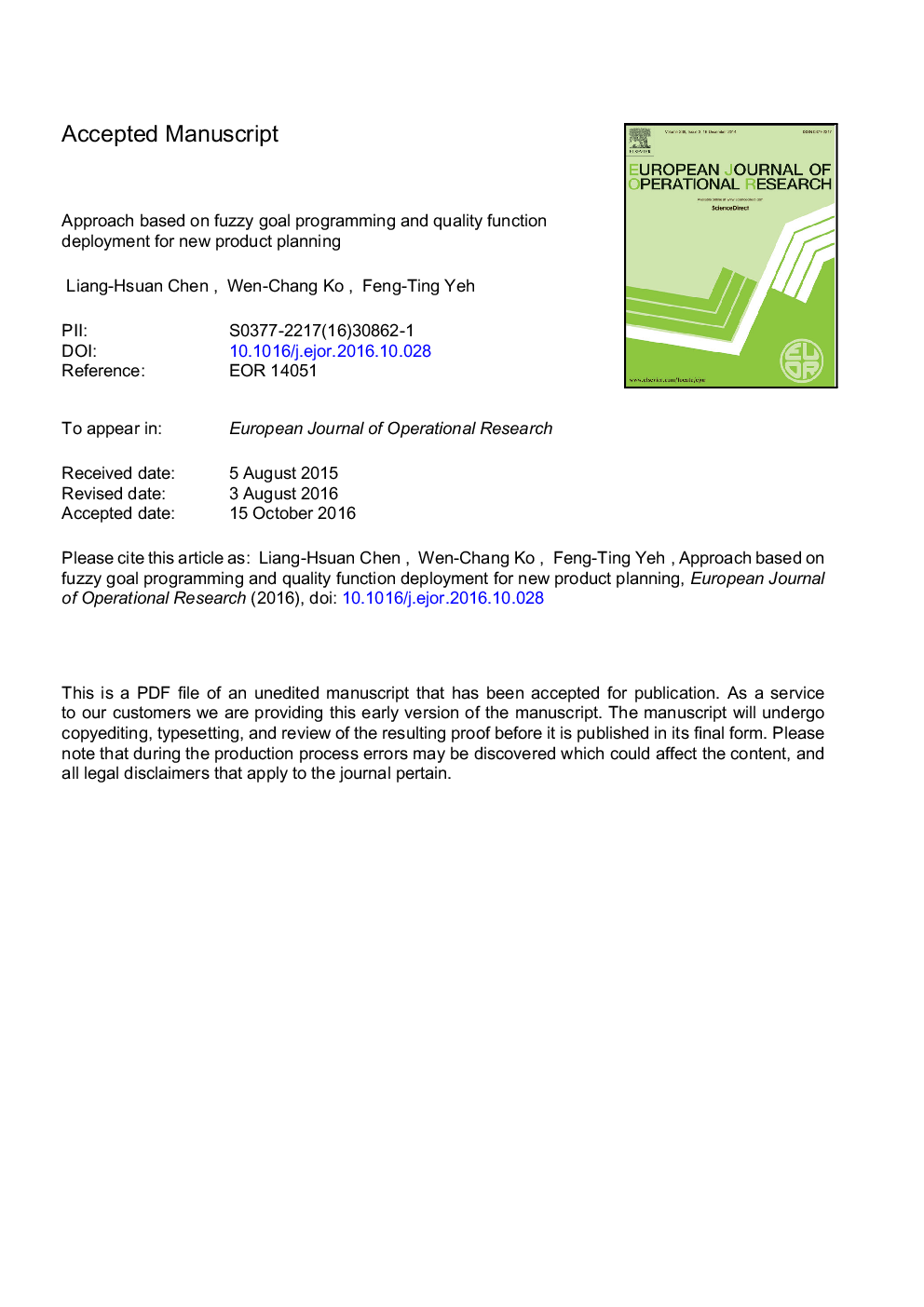| Article ID | Journal | Published Year | Pages | File Type |
|---|---|---|---|---|
| 4960197 | European Journal of Operational Research | 2017 | 34 Pages |
Abstract
Quality function deployment (QFD) is a useful planning tool for facilitating new product planning (NPP) to maximize customer satisfaction. Although customer satisfaction is an important goal in NPP, other goals must also be taken into account. The evaluation of QFD involves vagueness and imprecision and thus fuzzy approaches have been applied. This study considers the satisfaction of each customer requirement (CR) as the response variable and the fulfillment levels of the corresponding design requirements (DRs) as the explanatory variables. Each CR's satisfaction expression is formulated using the mathematical programing method. Experimental design and fuzzy sets are employed to collect the input-output data set based on the evaluated relationships between CRs and DRs and the correlations among DRs in QFD processes based on the QFD team's ability, experience, and knowledge. Considering three objectives, namely the maximum customer satisfaction, minimum incremental cost and minimum technical difficulty of DRs in NPP, an additive fuzzy goal programing model is proposed to obtain the optimal satisfaction under the preemptive priority structure of all goals. Furthermore, considering that customer satisfaction complies with Herzberg's two-factor theory, this study incorporates the concept of motivation and hygiene factors into the model, to modify the fulfillment levels of DRs to enhance customer satisfaction. A numerical example is used to demonstrate the applicability of the proposed model.
Related Topics
Physical Sciences and Engineering
Computer Science
Computer Science (General)
Authors
Chen Liang-Hsuan, Ko Wen-Chang, Yeh Feng-Ting,
